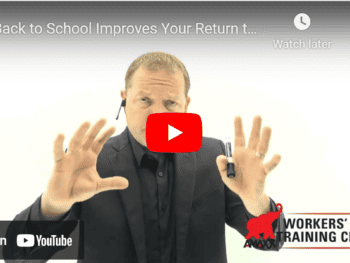Employers who successfully manage their workers compensation cost understand the importance of a strong Return to Work program. When an employee returns to work as soon as he is medically able, the indemnity payments are decreased, the medical and rehabilitation cost are lower and there is less of a productivity drop for the employer. Returning to work sooner also benefits the employee by restoring a higher level of income, providing a faster physical recovery and promoting the emotional health of the employee.
Editor Michael B. Stack, CPA, Director of Operations, Amaxx Risk Solutions, Inc. is an expert in employer communication systems and part of the Amaxx team helping companies reduce their workers compensation costs by 20% to 50%. He is a writer, speaker, and website publisher. Contact: Mstack@ReduceYourWorkersComp.com.
ESSENTIAL: This article is Return-to-Work Essentials content.















